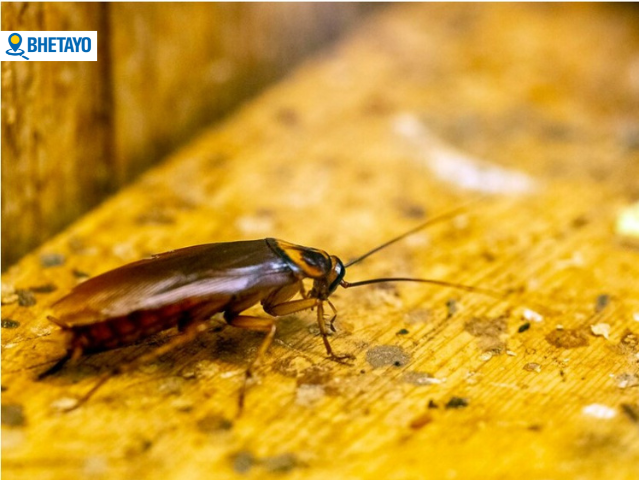Your home is under attack! Protect it with pest control

The removal of pests, such as insects, rodents, and other unwanted creatures, from a specific region or environment is known as pest control. Pests can be a nuisance and can cause damage to property, taint food, and spread disease. Physical means of pest control, such as catching pests or erecting barriers to keep them out, as well as chemical ones, such as applying insecticides or rodenticides to kill pests, are also possible.
In addition to being unattractive and embarrassing for you to have among guests, pests also spread a number of diseases. Whether they are ants, cockroaches, flies, or spiders, these pests can be a daily annoyance. The kitchen is typically the first place that pests attack since it is easy for them to discover food scraps and other food-related waste. Pests can gradually take over your kitchen and eventually your entire house if you do not have a strong cleaning regimen to keep them in check.
Experience is essential in pest management because it enables the pest controller to locate the source of the infestation and implement the most efficient control measures. A good pest controller should have in-depth knowledge of various pest varieties, their behavior, and effective control procedures. The ability to spot even the smallest indications of a pest infestation and close attention to detail are qualities of a skilled pest controller.
When it comes to receiving pest control services, people in Nepal are dealing with a variety of issues. One issue is the lack of qualified and trustworthy people, as well as the challenge of locating high-quality goods that satisfy regulatory requirements. Due to a lack of resources and rules, pest control in Nepal is becoming an increasingly difficult problem. Finding companies that have specially trained staff, use appropriate technologies when using pest poisons, limit the harm caused to non-target species and the environment, comply with government regulations related to pesticide application, etc. is the main challenge faced by people trying to get pest control services.
Problems
(Rats, houseflies, Mosquito, ants, bed bugs, cockroaches, terminates, flies)
• Property damage: Pests such as termites, rodents, and carpenter ants can cause significant damage to buildings, furniture, and other structures.
• Health risks: Pests such as mosquitoes, ticks, and rodents can carry and spread diseases to humans and animals.
• Food contamination: Pests such as rodents and insects can contaminate food and food preparation areas, leading to foodborne illness.
• Allergies: Pests such as cockroaches and dust mites can trigger allergies and asthma in some people.
• Bites: Pests such as spiders, ants, mosquitoes, and bedbugs can bite and leave rashes on the body.
• Damage reputation: Pests are the main cause of reputation damage, which can result in business closure.
Solution:
Bhetayo provides pest control services inside the valley through its platform that connects users with verified and trained service providers who specialize in pest control.
• Property damage:
With a range of techniques, Bhetayo’s specialist is assisting in resolving property damage brought on by pests. These include the management of pest resources, the implementation of preventative measures for the reduction and prevention of pest threats, routine inspections to address current problems, the use of natural remedies or organic pesticide applications when necessary, and educational materials designed to inform homeowners about how to reduce damages caused by an infestation.
• Health risks:
Bhetayo’s experts help to reduce the risk that pest poses to people’s health in addition to inspections and pest control technique, they also offer risk assessments for potential infections and site–specific preventive measures. As well this includes effective pest identification, exclusion, and exclusion products that can help prevent access; putting sanitation protocols into practice, such as correctly storing food or disposing of garbage in the right way; using chemical treatments to eradicate existing populations; and monitoring programs that involve routine inspections for signs of infestation. These actions are being actively taken by Bhetayo pest control professionals in an effort to lower the health hazards connected to pest exposure!
• Food contamination:
By investigating and creating innovative techniques for identifying, preventing, and controlling pest populations, Bhetayo’s expert is attempting to resolve the problem of food contamination brought on by pests. This includes strategies like releasing beneficial insects into areas with high rates of infestation and using natural predators to control pest populations. It also includes sophisticated monitoring systems that can determine if an area has too many pests already present or are entering from other sources. It also includes integrated pest management (IPM) strategies that combine mechanical barriers with biological controls.
• Bites, Allergies, and Irritation:
With a variety of techniques, Bhetayo expert in resolving bites, allergies, and irritation brought on by pests. These include methods of preventing pests from entering structures, such as increasing hygienic standards, monitoring indoor air quality and humidity levels, using natural repellents to ward off invaders, removing food sources that might attract pests in the first place, sealing entry points around homes or workplaces where they can enter structures, etc. Moreover, tactics like organic integrated pest management have been used, which entails enhancing conventional pest control methods with environmentally friendly techniques like biological controls to cut back on the use of pesticides. In order to prevent any negative responses from skin contact or dust irritations while eliminating infestations, the Bhetayo’s experts also advise wearing protective clothing when dealing with pests.
• Damage reputation:
The specialist at Bhetayo employs a variety of tactics to repair reputational harm brought on by pests. This includes the evaluation and application of pest control measures, preventive actions like improved sanitation practices, and thorough cleaning and disinfection services.



